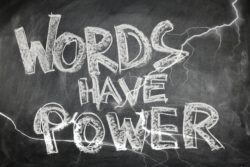This blog post was originally published on September 27, 2013. I am in a writing conference (virtual) this week, so I am running a Best of the Grammar Diva post. Enjoy!
Pronouns are one of the eight parts of speech. They are used to stand in for a noun (or another pronoun), and they probably cause more trouble than any other part of speech. There are six varieties of pronouns.
1. Personal Pronouns:
I me my/mine
you you your/yours
he him his
she her hers/her
we us our/ours
they them their/theirs
it it its
who whom whose
The pronouns in the first column are used for subjects in a sentence (nominative case). The ones in the second column are objects (objective case). Those in the last column are possessive (possessive case).
If you took Latin, you might remember these as nominative, accusative, and genitive (I think!)
A. She and I went to the movies.
She and I went to the movies with him and her. (If you have a problem deciding, just take out the other person, and see which sounds right by itself.)
B. It’s between you and me (Not you and I….these pronouns are the objects of the preposition between. You wouldn’t say between we, would you??)
C. Trouble with who and whom? Try substituting he and him. If he works, use who. If him works, use whom.
- Who is going with you? (He is going with you.)
- Whom are you inviting to the party? (I am inviting him to the party.)
- With whom are you going? (I am going with him.)
D. Remember that none of the possessive pronouns (right-hand column) have apostrophes, so its doesn’t either when it implies ownership.
2. Demonstrative Pronouns:
This, that, these, and those — and they don’t usually cause problems. Just remember to use this and that with singulars, and these and those with plurals (not these kind of books, but these kinds of books).
3. Interrogative Pronouns:
Used to ask a question: Who, whom, whose, what, and which – These generally don’t cause a problem.
4. Reflexive/Intensive pronouns:
These are the pronouns with -self at the end: myself, yourself, himself, herself, itself, ourselves, yourselves, themselves
Remember: The only time you can correctly use myself in a sentence is when I is the subject. Likewise, you can use yourself only when you is the subject, and so on.
Correct: I made myself a fancy dinner.
Incorrect: She told a story to him and myself. (should be me)
5. Indefinite Pronouns:
There are many of these including the ones ending in -thing, -one, and -body: Nothing, something, anybody, everything, anyone, etc.
Those are all singular, which leads to a problem! (There are several indefinite pronouns that are plural.)
Everyone is bringing their tents. (Everyone is singular and so is the verb is. But their, which stands in for everyone, is plural. This “mistake” is frequently made because there is no singular pronoun for a human that isn’t gender specific. “Him or her” is awkward to say. Therefore, it has actually become acceptable to use the singular their. I don’t like it and would recommend just rewriting the sentence to avoid the problem:
- Technically incorrect (but acceptable) – Everyone is bringing their tents.
- Correct, but awkward – Everyone is bringing his or her tent.
- Rewritten to solve the issue – Everyone is bringing a tent.
6. Relative Pronouns:
These pronouns introduce clauses: which, that, who, whom, and whose.
Examples:
- This is the boy who lives next door.
- That movie, which I saw last year, is now out on DVD.
Just remember to use which and that for things; and who, whose, and whom for people. Also, use commas around the clause if you could take it out and preserve the meaning of the sentence. Use no commas around the clause if you need it to understand the sentence or identify whom or what you are talking about.
For more information on pronouns, you might want to buy my books. 😆 (just a suggestion)
Stay Safe! Stay Well!




Leave a Reply